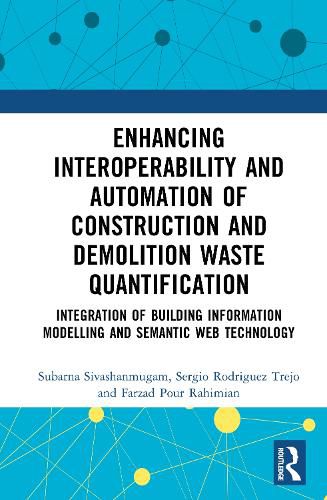Readings Newsletter
Become a Readings Member to make your shopping experience even easier.
Sign in or sign up for free!
You’re not far away from qualifying for FREE standard shipping within Australia
You’ve qualified for FREE standard shipping within Australia
The cart is loading…






Enhancing Interoperability and Automation of Construction Waste Quantification outlines the construction waste quantification (CWQ) modelling that supports data-driven decision-making in the built environment. It presents how the functionalities of Building Information Modelling (BIM) and Semantic Web Technologies are integrated to enhance the interoperability and automation of the CWQ process.
The research in this book shapes the development of a framework that supports the built environment in quantifying construction waste (CW) and informing optimal material choices from early design stages to minimise the quantity and diversity of waste generation. The book also demonstrates the application of the proposed framework using an ontology (PROduct CIRcularity Ontology) and a BIM-integrated digital tool (Building Waste Tool). The PRODCIRO and BWT showcase how the standardisation, consistency, and granularity achieved within CWQ workflows enhance data sharing and automate the CWQ process. The book also presents the outputs of a test-case building used to validate the adaptability and accuracy of the framework.
This book is a valuable resource for BIM engineers, researchers, civil engineering and architecture students, and construction professionals. It provides a comprehensive discussion on the significance of CW, its impacts on sustainability, advancements in CWQ, and data and information gaps within the existing CWQ practices. The solution proposed in the book will help the built environment shift from reactive to proactive and preventive waste management.
$9.00 standard shipping within Australia
FREE standard shipping within Australia for orders over $100.00
Express & International shipping calculated at checkout
Enhancing Interoperability and Automation of Construction Waste Quantification outlines the construction waste quantification (CWQ) modelling that supports data-driven decision-making in the built environment. It presents how the functionalities of Building Information Modelling (BIM) and Semantic Web Technologies are integrated to enhance the interoperability and automation of the CWQ process.
The research in this book shapes the development of a framework that supports the built environment in quantifying construction waste (CW) and informing optimal material choices from early design stages to minimise the quantity and diversity of waste generation. The book also demonstrates the application of the proposed framework using an ontology (PROduct CIRcularity Ontology) and a BIM-integrated digital tool (Building Waste Tool). The PRODCIRO and BWT showcase how the standardisation, consistency, and granularity achieved within CWQ workflows enhance data sharing and automate the CWQ process. The book also presents the outputs of a test-case building used to validate the adaptability and accuracy of the framework.
This book is a valuable resource for BIM engineers, researchers, civil engineering and architecture students, and construction professionals. It provides a comprehensive discussion on the significance of CW, its impacts on sustainability, advancements in CWQ, and data and information gaps within the existing CWQ practices. The solution proposed in the book will help the built environment shift from reactive to proactive and preventive waste management.